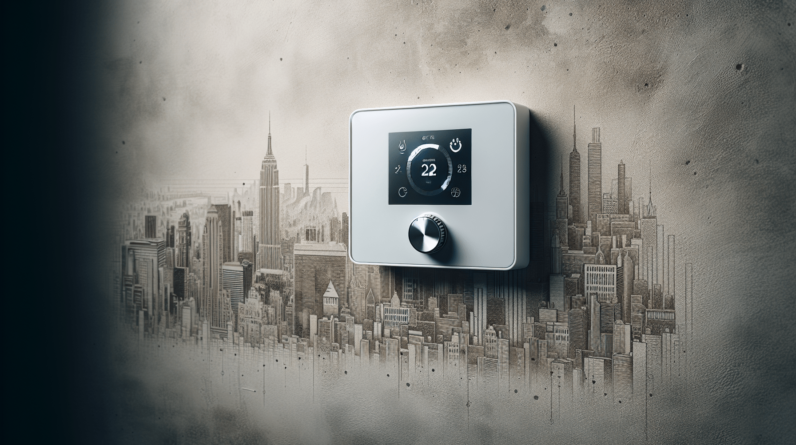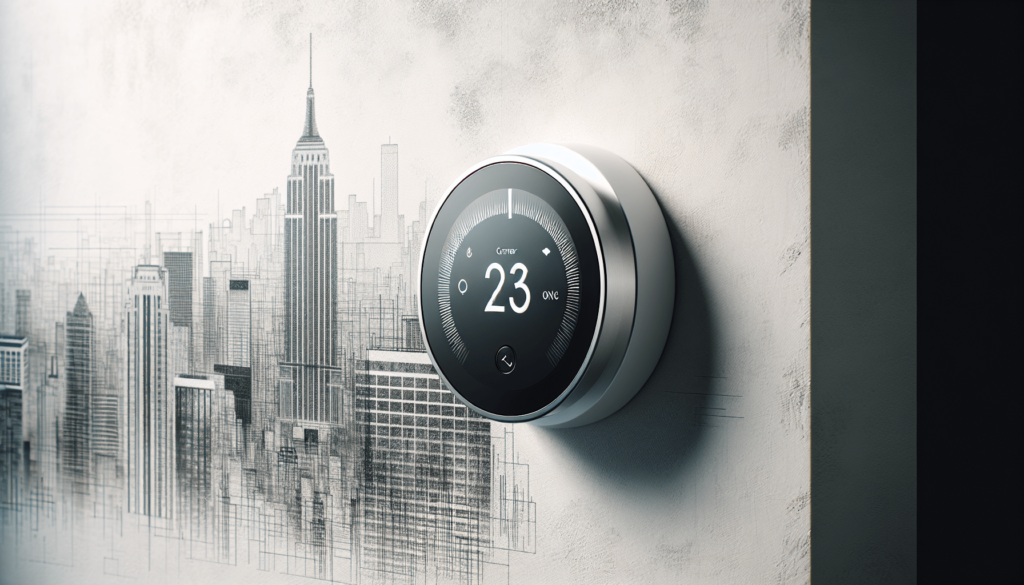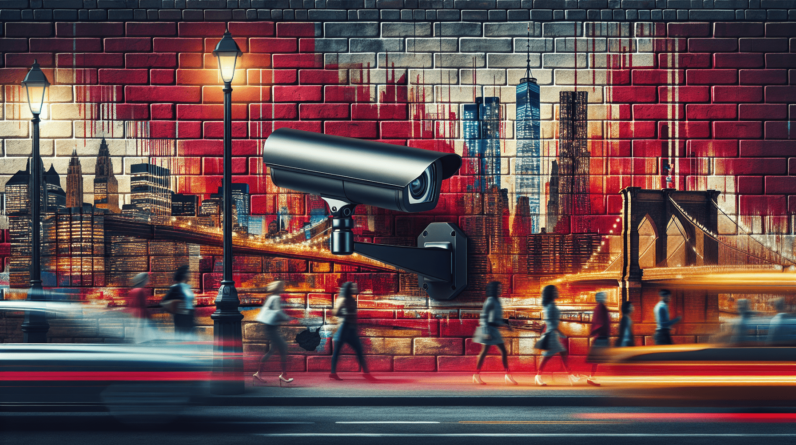

Have you ever wondered how the wiring in your thermostat affects the overall efficiency of your heating and cooling systems? It’s a great question, and understanding it can lead to improved comfort in your home while saving you money on energy bills. By knowing about the best thermostat wiring, you can ensure that your system runs optimally, which is especially important in a bustling place like New York City.
Understanding Thermostat Wiring
When it comes to thermostats, wiring might seem like a complicated puzzle. However, once you break it down, it becomes much easier to comprehend.
Thermostat Basics
At its core, a thermostat is a device you use to regulate your home’s temperature. It communicates with your HVAC system, helping to maintain comfortable conditions. Different types of thermostats are available, and they all require specific wiring configurations to function properly.
Types of Wiring Configurations
Thermostats typically have several wire configurations based on the types of heating and cooling systems you may have. Understanding these configurations can help you utilize the best wiring setup for your thermostat.
Common Wire Colors and Their Functions
Here’s a simple table to help you identify common wire colors and their respective functions:
| Wire Color | Function |
|---|---|
| Red | Power (24V) from the transformer |
| White | Heating (typically connects to a furnace) |
| Yellow | Cooling (typically connects to the air conditioner) |
| Green | Fan (controls the blower for the HVAC system) |
| Blue or Black | Common wire (provides continuous power) |
Knowing which wire does what can demystify thermostat wiring for you.
Choosing the Right Thermostat
Before you start wiring, picking the right thermostat is crucial. Depending on your HVAC setup, you might find different thermostats suit your needs.
Digital vs. Mechanical Thermostats
You have two main types of thermostats to consider: digital and mechanical.
Digital Thermostats
Digital thermostats offer precision and often come with programmable features. You can set schedules, adjust temperatures remotely, and some even come with Wi-Fi capabilities to integrate with your smart home systems.
Mechanical Thermostats
Mechanical thermostats are more straightforward and often less expensive. They rely on physical components to regulate temperature and generally do not have the advanced features of digital options. If you prefer simplicity, this might be the right choice for you.

Preparing for Installation
Once you’ve chosen the right thermostat, the next step is proper preparation for installation.
Gather Your Tools
A successful installation requires a few tools. Here’s a list to help you prepare:
- Screwdriver (flathead and Phillips)
- Drill (if you are mounting a new thermostat)
- Wire strippers
- Voltage tester
- Level (for ensuring your thermostat is straight)
Having these tools on hand makes the installation process run smoothly.
Safety First: Turn Off Power
Before doing any wiring, always prioritize your safety. Switch off the power to your HVAC system from the circuit breaker. This simple step can save you from electric shocks.
Installing Your Thermostat Wiring
Now comes the exciting part—installing your thermostat wiring. Knowing the steps can make this process easier and help you avoid common pitfalls.
Removing the Old Thermostat
Start by carefully removing your old thermostat. Make sure to take a photo of the wiring configuration or label each wire with tape. This will help you replicate the setup when installing the new device.
Connecting the Wires
Reference the table from earlier to connect your new thermostat wires correctly. It’s essential to match the colors and functions accurately.
- Attach the red wire to the “R” terminal.
- Connect the white wire to the “W” terminal for heating.
- Use the yellow wire for cooling at the “Y” terminal.
- For the fan, connect the green wire to the “G” terminal.
- If your setup includes a common wire, attach it to the “C” terminal.
Mounting the Thermostat
Once your wiring is complete, gently tuck the wires back into the wall and mount your thermostat. Use a level to ensure that it’s straight, which not only looks good but can also contribute to accurate temperature readings.

Powering it Up
After securing the thermostat in place, return to the circuit breaker and turn the power back on. Your new thermostat should come to life, often moving through the setup process automatically.

Troubleshooting Common Issues
Even with careful installation, you may encounter issues after wiring your thermostat. Knowing how to troubleshoot can save you time and frustration.
No Display
If your thermostat doesn’t display anything, double-check the wiring connections, especially the power (red) wire.
System Not Responding
If the HVAC system doesn’t turn on, ensure that the thermostat is compatible with your heating and cooling systems.
Inconsistent Temperatures
Should the temperature reading be inconsistent, check if the thermostat is placed in an area with drafts or direct sunlight, which can affect its readings.
Finding Professional Help in NYC
Sometimes, taking on thermostat wiring can feel overwhelming. If you find yourself stuck or would rather have a professional handle it, New York City has many HVAC experts who can assist you.
Local HVAC Services
When searching for professional help, it’s essential to choose someone who understands your specific needs. Look for local HVAC companies that specialize in thermostat wiring and have good reviews.
Checking Credentials
Verify that the professionals are licensed and insured. This is crucial for ensuring that you’re getting someone who knows what they are doing and can provide you with quality service.
Costs Involved
Understanding the costs associated with hiring professionals can help you budget accordingly. Expect to pay for the service as well as any materials required for the installation. Here’s a rough breakdown of potential costs:
| Service Type | Estimated Cost |
|---|---|
| Thermostat Installation | $75 – $150 |
| Wiring Issues | $100 – $200 |
| Full HVAC Inspection | $150 – $300 |
Prices can vary based on the complexity of the task and your specific location in New York City.
Benefits of Proper Thermostat Wiring
You may be wondering why you should care so much about thermostat wiring and installation. Understanding the benefits can help you appreciate the effort you put into this project.
Increased Energy Efficiency
Proper wiring ensures that your HVAC system operates efficiently. This increased efficiency means lower energy bills and a positive impact on the environment.
Improved Comfort
An effectively wired thermostat can provide more accurate temperature readings, ensuring that you stay comfortable in your home regardless of the season.
Longevity of Your HVAC System
When your thermostat is properly installed and functioning efficiently, it contributes to the overall health of your HVAC system. This can extend the lifespan of your heating and cooling units.
Conclusion
Understanding the nuances of thermostat wiring in New York City can empower you to make informed decisions regarding your HVAC system. Whether you choose to tackle the installation yourself or hire a professional, the right thermostat setup can lead to a more comfortable and energy-efficient living environment.
If you have any more questions about choosing or wiring a thermostat, don’t hesitate to reach out to local professionals or consult home improvement resources. With proper understanding and set up, you can enjoy the benefits of an efficient HVAC system for years to come.






